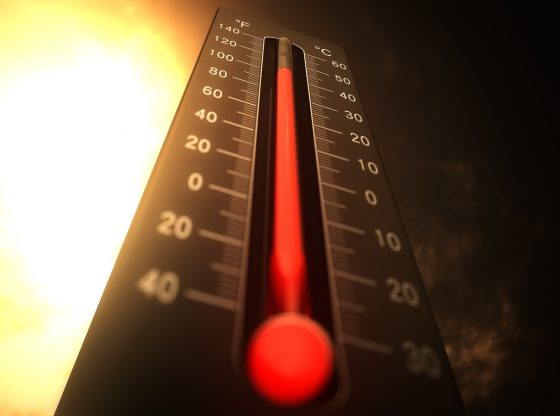The world is getting warmer, this is an undeniable fact. Since the late 19th Century, the average global temperature has risen by 1.1°C. On top of that, 16 of the 17 warmest years on record have occurred since 2001. Climate change has had a number of high-profile effects on our planet, from rising sea levels to increasingly extreme weather events, but there are other consequences which are not as media-friendly as sad-looking polar bears.
The increase in temperatures is playing havoc with soil moisture levels. 70% of subsidence cases in the UK are due to soil shrinkage, so the increasing aridity of our soil is having a significant impact on the number of cases of subsidence.
British soil
The soil type which is most affected by moisture and temperature is clay. Both clay and silt are cohesive soils, so the drier the weather, the more the soil will shrink due to lack of moisture. When soil shrinks it creates cavities, in other words, subsidence. Significant chunks of Britain’s soil is clayey, especially in London, Essex, Hertfordshire and Bedfordshire. These are areas which are going to be affected by the increasing occurrence of subsidence.
Soil shrinkage is not something that happens instantly as soon as the weather gets a bit drier. Soil shrinkage happens over the course of a few seasons. Several dry months creates dry soil, which leads to subsidence. This map shows soil shrinkage areas in the UK and how these areas are at risk of becoming even more susceptible to shrinkage.
Even though the UK is one of the more temperate places in the world, climate change is going to have an enormous effect over the next several decades. What is considered a heatwave nowadays will probably be the norm by the 2050s.
Subsidence on the rise in Europe
Figures from a 2011 report showed that property damage from drought-induced soil subsidence has increased dramatically across Europe. It highlighted France in particular, saying that subsidence-related losses have risen by over 50% in less than 20 years. In some parts of Europe, subsidence is reaching parity with flooding as a cause of property loss. This report made the claim that, compared with other natural disasters on the rise because of climate change, subsidence is not getting the attention it deserves and this is hurting homeowners.
This report uses the heatwave year of 2003 to demonstrate just how much of an impact droughts can have on subsidence. Property damage from subsidence led to losses of between EUR 530 million and EUR 1.1 billion.
What does this mean for you?
As a homeowner, this is just one more reason why climate change is going to be something you’ll have to think about over the next several years. Find out what soil type your home is standing on and be aware of the effects of soil shrinkage. Home insurers will have to adapt to the increasing prevalence of subsidence cases, to ensure that homeowners are not punished for the effects of climate change.

